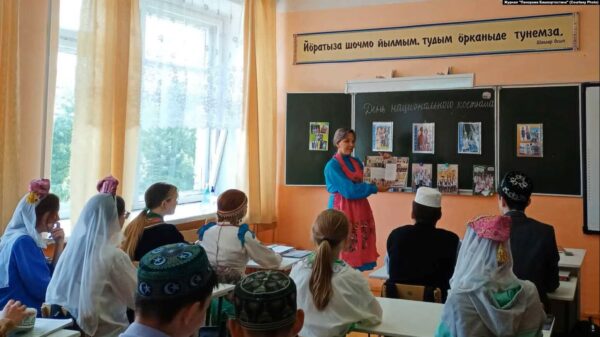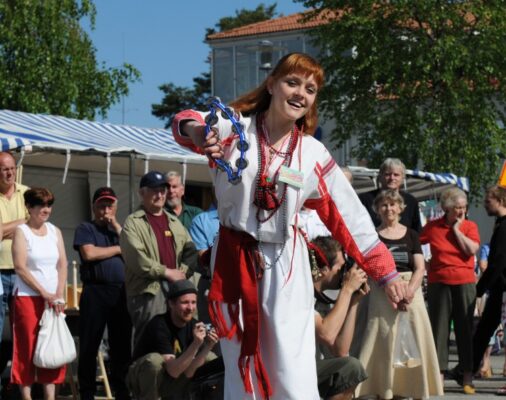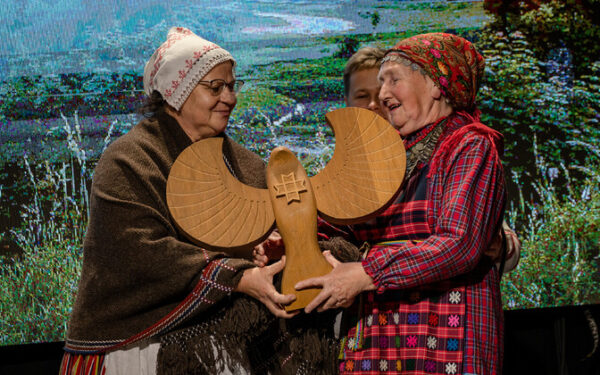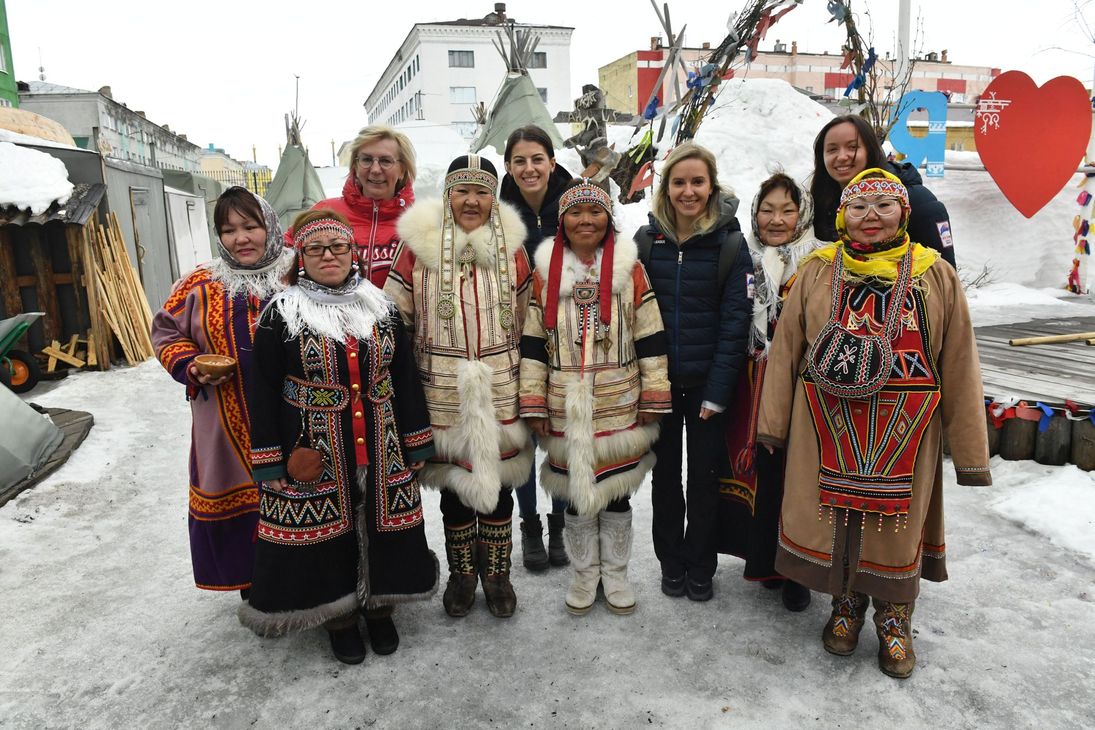
Nganasans
Names
Their autonym is ‘nganassa(n)’, frequently ‘ngano nganassan’, however this is not universal. The Avam group prefers the autonym ‘njaa’ (brother) and the eastern Vadejev group prefers asa. Nganasans have not developed a common ethnic identity. Their older but now outdated ethnonym “Tavgi Samoyeds” or “Tavgis” has spread to other languages via Russian.

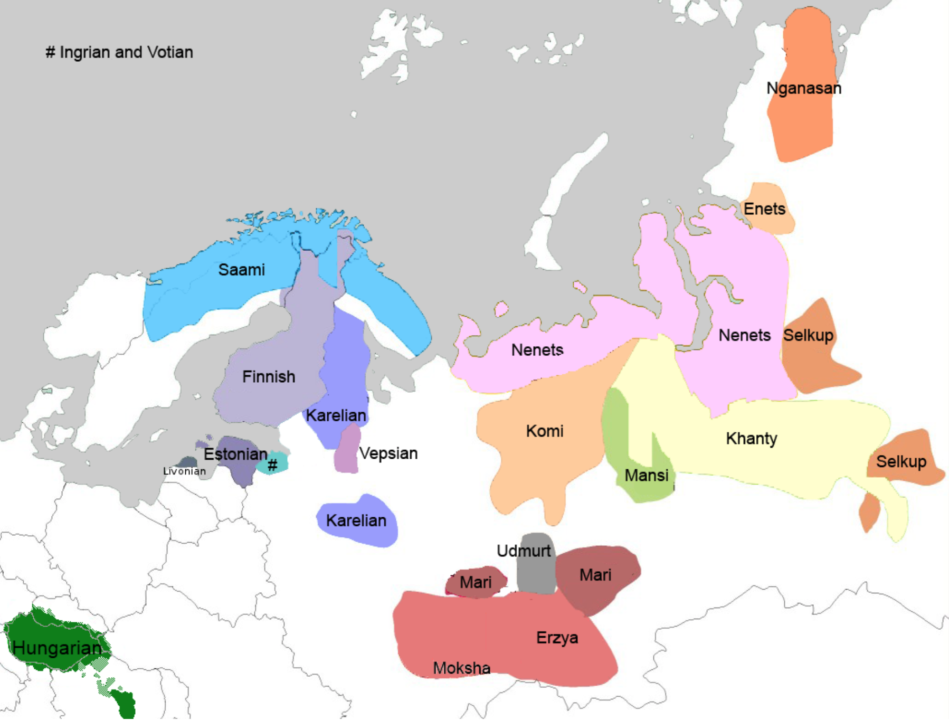
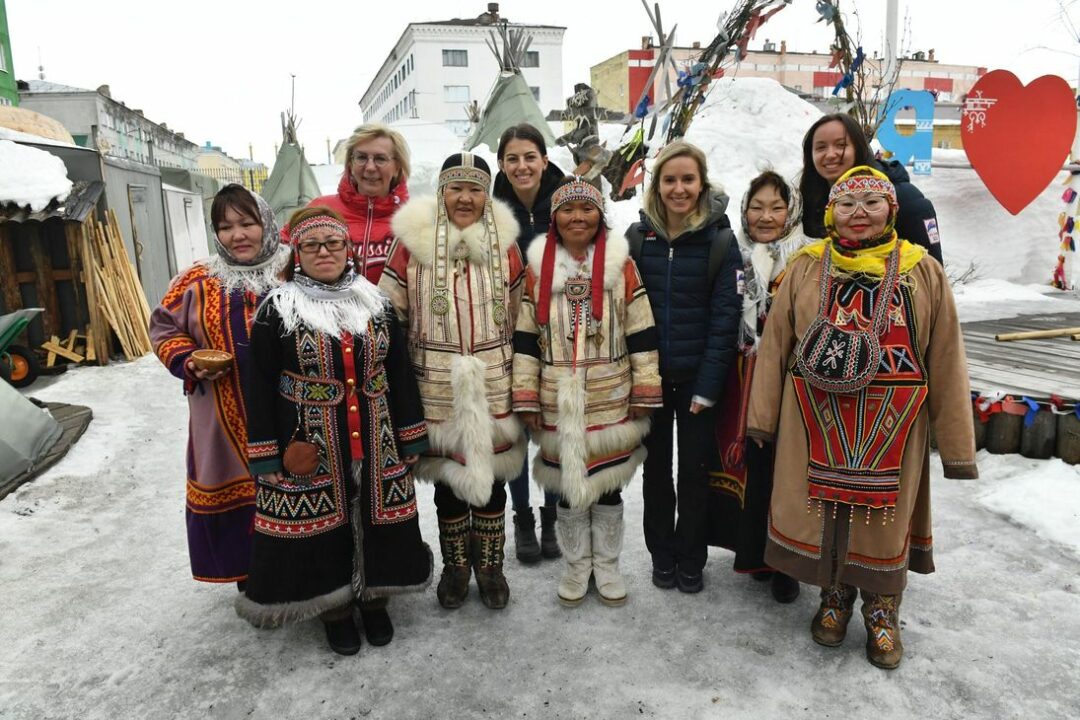
Territory
Nganasans live in the southern and central parts of the Taimyr peninsula near the Arctic Ocean, administratively belonging to the Taimyr Autonomous District of Krasnoyarsk Krai. This is a predominantly treeless tundra area, while in the south there is also forest tundra. Nganasans are the northernmost indigenous people of Eurasia.
Before being forced to become sedentary, Nganasans migrated from The Pyassino, Dudypta, Boganida and Heta rivers in the south to the Taimyr peninsula and Byrranga hills in the north. In 1960-1990 a gradual forced sedentism of Nganasans to three settlements: Volochanka, Ust-Avam and Novaya – took place.
Today, Nganasans form a minority in these villages: the largest ethnic group is Dolgans, while in Volochanka there are slightly more Nganasans than Dolgans. These days most Nganasans have moved out to larger cities of the region such as Dudinka and Norilsk. Sedentary Nganasans live quite far from each other and thus have very limited interactions.
Population
According to the 2010 census, 862 persons considered themselves Nganasans. In 2002 this figure was 834 and in 1989 there were 1262 Nganasans of whom 83.2% spoke the mother tongue. According to later studies only 44% of Nganasans spoke the language in reality and only 17.6% of Nganasans used it on a daily basis.
Language
Nganasan language, along with Nenets and Enets languages, form the Northern group of Samoyed languages. Towards the west, the Avam dialect is spoken, while Vadeyev or Khatanga dialect is spoken in the East. Differences between dialects are not significant. During the 2010 census, 125 persons claimed to know the Nganasan language.
The main language of communication both at home and at work is Russian. The language shift among the younger generation has been faster than among other Northern indigenous peoples due to the sudden transition to sedentism in multi-ethnic villages, as well as due to mixed marriages and residential schools.
Russian language and environment is regarded highly among Nganasans. On the other hand, this environment is rejecting Nganasans. It has been reported that Russians who interact with Nganasans have been subjected to bullying.
History
Nganasans probably assimilated a Paleo-Asiatic hunting tribe, as well as western Yukagirs, northern Tungus and western Samoyeds. In the 17<sup>th</sup> century, Nganasans were taxed by Russians. To faciliate collection of yassak, Nganasans were offered 15 buckets of vodka a year. Exploitation of their work and natural resources took off.
For a long time Nganasans lived in moderate isolation from Russians, however the Soviet rule brought changes. Since the 1930s and 1940s – somewhat later than with neighbouring peoples – authorities started persecuting Nganasans as well, by repressing both shamans and “kulaks”, despite the absence of significant economic inequalities among the Nganasans.
In the 1930s, during the collectivisation, reindeer herding brigades were established that initially consisted only of Nganasans. Towards the late 1950s and in 1960s, Nganasan and Dolgan brigades were merged and soon led to Nganasans’ forced sedentism which was seen as a prerequisite for “raising the cultural level” of nomads. This also led to the disappearance of nomadic reindeer herding. By the early 1990s over 90% of Nganasans had become sedentary.
Adapting to new circumstances have caused major problems for Nganasans. Most of them have been forced to perform unskilled labour and there are high levels of unemployment. Alcoholism is pervasive.
Livelihoods
Reindeer hunting has been an important livelihood for Nganasans and continues to be so, given that Taimyr has the world’s largest population of wild reindeer. Nganasans used to practice driven hunt at river crossings during reindeer migratory periods in autumn and spring.
Summer hunting of waterfowl, winter hunting of fur animals (with traps) and fishing has also played an important role in traditional Nganasan economy. They lived in temporary tent dwellings and kept sled reindeer who would drive the narta.
In the 19th century, Naganasans adopted large-scale domesticated reindeer herding with a permanent nomadic lifestyle (to the south in winter, to the north in in summer). Most Nganasan migratory areas were in treeless tundra, however in winter they also reached forest tundra. In the middle of the 20th century, baloks or mobile houses driven on skis by reindeer, were adopted, thus rapidly replacing tent dwellings.
In the 1970s reindeer herding and nomadic lifestyles disappeared among Nganasans due to regional economic policies. Domesticated reindeer herding areas have been replaced with wild reindeer areas. In our times, reindeer and fur animal hunting as well as fishing is practiced in collective farm units. Women work in village sowing workshops, producing reindeer hide clothes and souvenirs.
Beliefs
The shamanist-animist religion of Nganasans is based on the idea of reciprocity and balance between human and the supernatural worlds. The idea of balance is manifested in the sharing of hunting game between community members as well as in the moderate usage of resources in general, given that gods and tundra spirits punish greedy and selfish people. At times, sacrifices are made in the tundra in order to ensure good relations with supernatural powers and to secure good hunting game, health, happiness and well-being.
Shamans have mediated the relations between humans and gods for many centuries. Nganasans believe in the existence of supernatural spirits. In their cosmology, Mother Earth, Mother Sun and Mother Fire are of great importance. Their best-known shamanistic rite is the the rite of the clean dwelling which took place in Mid-Winter after the end of the polar night and lasted 3-9 days during which the shaman was casting spells. The Kosterkin shaman dynasty is well known – their members were conducting shaman sessions exceptionally even during the Soviet era. These days shamanism has almost disappeared from the Taimyr peninsula.
Further references
Read the Article from The Red Book of the Peoples of the Russian Empire

